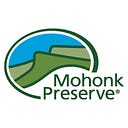Research Report #25— Arbutus Habitat
For many years scientists and naturalists have been studying and observing the flora and fauna of the Shawangunk Ridge. Foremost among them was Daniel Smiley, for whom Mohonk Preserve’s Daniel Smiley Research Center is named. Dan wrote numerous reports summarizing his observations on various topics. This regularly occurring series will feature some of these reports; some hold tremendous scientific value today and just await an interested researcher to follow up, others showcase a quirky sense of humor or highlight an oddity of nature.
Read the report: Arbutus Habitat. 22 July 1976. Daniel Smiley.
A Note from Paul C. Huth, Director of Research Emeritus:
Trailing Arbutus, Epigaea repens, is a native wild flower well known through the decades in the northeast for its welcomed early spring flowers. It is a vining, evergreen plant of the Ericaceae, or Heath Family. In the 19th and early 20th centuries it was also called “Mayflower” and “Ground Laurel.” It is one of over 200 plants that we watch at the same locations each year for first flower as part of one of our long term phenological studies started by Daniel Smiley. Arbutus flowers tend to be either pink or white, and are delicately fragrant. The first incidental records of bloom of Arbutus start with the Smiley Family in April 1874. Regular annual observations have been recorded since about 1928. We watch for beginning of bloom the last few days of March, depending generally on location and how the spring is evolving. Bloom can last through the last days of April, again, depending on location.
Dan wrote this Research Report focusing on Arbutus habitat as a result of his casual observations over the years of where he found it growing, which was, it seemed, mostly confined to disturbed sites. Similarly, John Burroughs alluded to a plants particular growing habitat in Pepacton(1881), in his essay “A Bunch of Herbs,” “….one learns where to look for arbutus, for pipsissewa, for the early orchis; they have their particular haunts, and their surroundings are nearly always the same.”
A field survey for this study was conducted by friend and Mohonk Trust Board Member, LaVerne Thompson, in April, 1976. Three locations where Arbutus was known to grow were investigated-Maple Path (an old wood road), and Oakwood Drive and Overcliff Road (historic Mohonk carriage roads). A summary of LaVerne’s observations revealed that in fact “disturbed soil seems to be necessary….” and “….that most arbutus plants….are growing on exposed mineral soil in the uphill cut of the road, rather than on the transposed fill soil on the downhill side.” Also, no additional Arbutus plants were found beyond the disturbance in adjacent vegetation. Over time, where disturbance was naturally overcome and competitive plants succeeded in taking hold, Arbutus plants showed a distinct decline in plant vigor and bloom.
In a related observation from naturalist Ruth H. Smiley, Arbutus is also known to grow in the disturbance provided by foot paths and deer trails, “….spread(ing) out into (them), presumably because there is less competition from non-recumbent plants. Leaves on these plants tend to be larger.” But in these situations, winter kill of the exposed leaves could result if there was a lack of snow cover with desiccating wind and low temperatures.
Dan also related his experience in two different sites that were “….cultivated and pastured, respectively, more than 75 years ago. Apparently the growth of arbutus was favored in the old field stage of these areas as they returned to forest.” The plants disappeared once the window of disturbance closed with later forest competition.
Dan posed the dilemma that we as land stewards have-species protection and land management. One would think that “pristine woodland” would be the best goal for our Shawangunk plants and animals. But, as Arbutus, and some other species like lady slipper orchids show us, these species are early colonizers of disturbed sites, and decline in numbers with time away from the original disturbance. We need to watch the old stands of Arbutus and monitor their vigor over time, and watch for areas of unexpected natural, and human, disturbance potentially offering new opportunities for Arbutus to take hold. In nature, change is always the rule!
As an aside, in the early 1990s, I had a request from writer and naturalist, and long time friend, Ed Kanze, who was preparing a new book The World of John Burroughs (Harry N. Abrams, Inc, New York, N.Y., 1993), wanting to know if I knew of any Arbutus stands that he could photograph. I suggested that he go to one of our best Arbutus stands on the Mohonk Preserve growing in the “mineral soil in the uphill cut” of one of our historic carriage roads. When the book was published in 1993, Ed included a photograph of Arbutus at that site (on page 37) followed by a quote from John Burroughs. He thanked me in his acknowledgements “….for guiding me to southern New York’s most photogenic patch of trailing arbutus….”
Read the report: Arbutus Habitat. 22 July 1976. Daniel Smiley.
